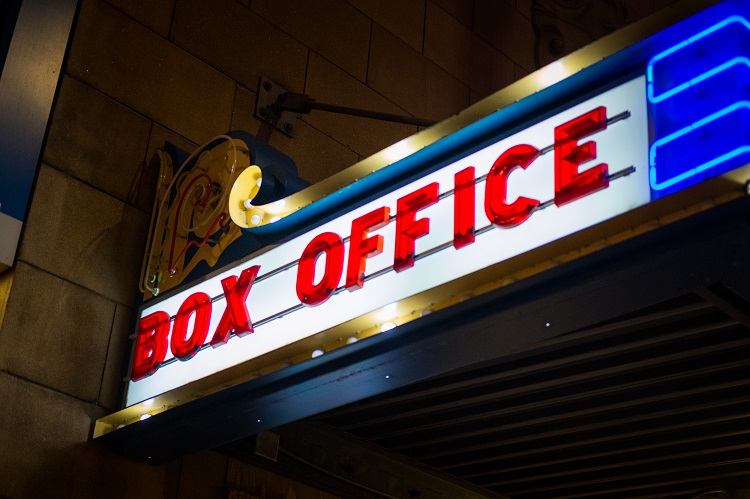The debate over the interplay (or apparent conflict) between values and capitalism is one with both theoretical and practical applications. It raises questions of whether maximizing value in the marketplace is inherently immoral, or whether profit-driven international development dilutes the true purpose of development work. But one of the most complex, practical debates on the subject has garnered relatively little serious discussion at a national level, even though it got lots of sound-bite attention during the election season: immigration.
The history of American immigration is one of paradox. Constant immigration reforms enacted since the mid-20th century—particularly major reform efforts in the 1920s and 1960s—sought to reconcile two equally important yet divergent American ethoi.
First, the United States is a country where individual liberty and economic freedom allow for the rapid expansion of capital and, as a result, the possibility for social mobility. The American immigration system should reflect these capitalist virtues by attracting and celebrating the best and brightest from around the world. It reflects a system and culture not of self-interest but of shared interest—a shared interest in the economic well-being of the country as a whole.
But second, the United States was also fashioned as a “shining city on a hill,” a beacon of light and hope for those seeking to flee the evils of genocide, bigotry or religious persecution. In the context of the American immigration system, this means an emphasis on access for refugees and asylees, as well as family reunification.
For the entirety of American history, this has been the conflict at the core of the immigration debate. Politicians and policy experts alike have sought to find the perfect balance between immigration as a vehicle for economic growth and immigration as a source of social justice. And yet, the result has often been a pendulum swinging from one extreme to the other.
After the rise of mass-migration in the mid-19th century, policymakers created an immigration system that reflected a purely capitalist sentiment. It allowed for the immigration of those (Western) Europeans who could be of the greatest benefit to the existing industries of the day. The Immigration Act of 1924 codified this system, which included quotas for every country based on the existing population of that nationality in the U.S., and limiting access for anyone who would become a public charge (at the time this included certain racial groups).
This policy existed, almost completely unaltered, until 1965, when the Civil Rights Movement spurred a tangential reform to the existing immigration system. The 1965 immigration reform bill, as Reed Ueda, a history professor at Tufts University, put it, was “a concomitant of the Civil Rights Act of 1964 and the Voting Rights Act of 1965.” It completely revamped the immigration system to provide a new emphasis on family reunification and racial parity, moving away from the economic focus of the previous 40 years.
What the 1920s and 1960s reforms represent is the tendency of immigration policy to swing to extremes. The 1920s reforms focused almost entirely on providing American businesses with the workers they needed, albeit with racial bias intermixed. The 1960s reforms focused almost entirely on a social emphasis on the importance of racial equality and family reunification.
The immigration system created in the 1960s is fundamentally the same one that exists today, including the original seven-level preference system. Reforms in the 1980s and 1990s merely revised the existing system, even adding to the emphasis on family reunification (in these cases, the proponents of a compassionate immigration system won out because, after all, who can vote against families?).
But as the American economy has changed, spurred on by mass innovation and technological progress, our immigration system, with its underlying social justice emphasis, has not kept up. While at least a quarter of all new small businesses are created by immigrants, thousands of immigrant students are sent back to their home country after graduation every year. Large companies, such as Microsoft and Google, report an inability to find enough skilled workers, forcing them to move facilities overseas (or sometimes to Canada as with Microsoft) to countries with more supportive immigration systems. As AEI’s own Nick Schulz pointed out in a recent paper, new immigrants add a huge amount of human capital to the American economy.
Schulz argues:
When any economy faces challenges, the first thing it should do is determine if it has any self-inflicted wounds, as those are the easiest to correct. The evidence is clear that the benefits of skilled immigration are high. The costs of bad immigration are also high. It is past time for the nation to stop shooting itself in the foot.With the recent election results pushing the parties closer together and towards progress on the issue of immigration, it will almost certainly be an issue revisited in President Obama’s second term. We should welcome that. Immigration is, in many ways, the perfect reflection of the American ideal. People from all over the world want to come to the United States for purposes of economic, religious and cultural freedom. An immigration system that emphasizes economics over compassion, or vice versa, fails to properly understand the American ethos. Finding the perfect balance, however, is not easy—in both policy and politics. But we owe it to ourselves and to those striving for a better life to make a serious effort towards a serious immigration reform. The conflict between values and capitalism is playing out daily when it comes to immigration, and yet on this issue, there doesn’t need to be conflict at all.



